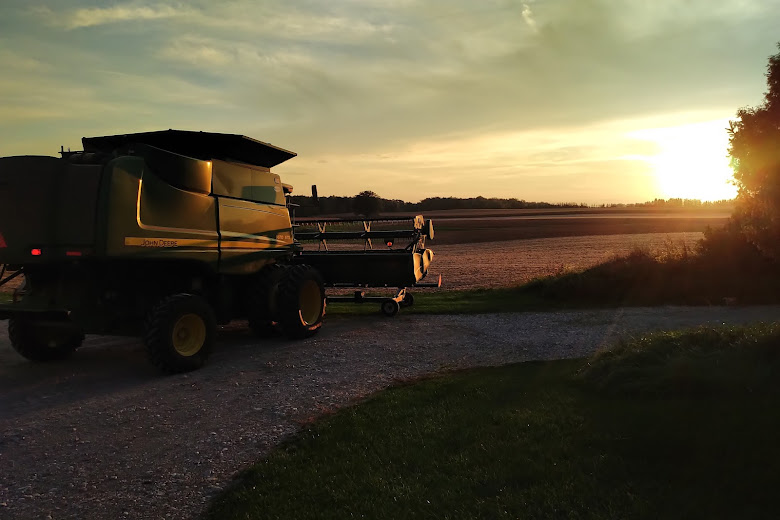 AS PREVIOUSLY PUBLISHED IN THE RURAL VOICE:
AS PREVIOUSLY PUBLISHED IN THE RURAL VOICE:
The use of Non-Agricultural Source Materials (“NASMs”) in Ontario agriculture is on the rise. NASMs are materials capable of being applied as a nutrient to farmland that do not come from agricultural sources. Examples include leaf and yard waste, fruit and vegetable peels, food processing waste, pulp and paper biosolids, and sewage biosolids. The last example, sewage containing human waste, is controversial. Application of sewage biosolids to farm fields has raised concerns from nearby residents about odour and the risk of transmission of bacteria and viruses.
Ontario began to regulate land application and storage of NASMs under the Nutrient Management Act, 2002 beginning in 2011. Anyone who wants to land apply or store sewage biosolids must have an NASM Plan prepared by an OMAFRA-certified plan developer. The Plan must give effect to the following purposes: 1) “the optimization of the relationship between the land-based application of nutrients, farm management techniques and crop requirements”; and, 2) “the minimization of adverse environmental impact”. The Plan must contain a contingency plan, including proposals for dealing with unanticipated releases of nutrients from storage or during transport or application and with the inability to store, apply or otherwise use materials or nutrients as a result of weather conditions or unavailability of equipment.
Most NASM Plans must be approved by OMAFRA. Where approval is not granted, the applicant may appeal OMAFRA’s decision to the Environmental Review Tribunal (“ERT”). In a recent decision, the ERT overturned a denial by OMAFRA of approval for an NASM Plan that included a new storage lagoon that would receive materials from various sources including washwater from confectionary, digestate mixed with pet food, digestate of grape skins, pomace and winery waste, washwater from winery, washwater from dairy processing facility and liquid anaerobically digested sewage biosolids. OMAFRA’s Director had refused to approve the Plan on the basis that the proposed lagoon, to be owned and controlled by a non-agricultural operator, was not an “agricultural operation” subject to the Nutrient Management Act, 2002.
The application under review was submitted jointly by two parties – a cash crop farming business and a waste management business. The two businesses already worked together under the farming business’ existing approved NASM Plans; the waste management business was contracted to implement the plans, including procuring and land applying NASMs. Now the two applicants proposed to revoke the existing plans and consolidate them into a single NASM Plan, at the same time adding a new storage facility. That facility – an earthen lagoon – would be located on the property of the waste management business and would be under the sole control of the waste management business. OMAFRA’s Director determined that the lagoon could not, on that basis, be considered an “agricultural operation”. The lagoon would require approval from the Ministry of the Environment as a non-agricultural waste facility.
On appeal, the ERT found that the Director was wrong to conclude that a waste management business could not be involved in an agricultural operation. That is, the proper consideration was of the operation and not the operator. The ERT found that the relevant regulation under the Nutrient Management Act, 2002 directed the OMAFRA Director to consider the “the comprehensive operation that is proposed”, not the “business activities of one of the operators”. While the proposed storage lagoon on its own would not be an agricultural operation, the ERT found that the lagoon would form part of an agricultural operation consisting of “six farms operating as a Farm Unit, with the inclusion of a storage lagoon for the storage of NASM dedicated to those six farms that form the Farm Unit.” Further, the ERT did not agree that the Director’s concerns about potential future use of the lagoon for other (possibly non-agricultural) purposes were relevant; the Director was tasked with considering the specific NASM Plan application before him.
The ERT also did not agree that the blending or agitation of separate types of NASMs as part of the proposed storage lagoon management process constituted an “intermediate operation”, which is by definition a non-agricultural operation. The Director considered the waste management business to be a “broker” who simply receives materials from one source, does not generate a new nutrient product from the materials, and then transfers the material to another operation. The ERT accepted the position of the applicants that storage and agitation of the NASMs is not “blending” for purposes of the definition of an “intermediate operation”. If that were the case, then virtually all NASM storage facilities would be categorized as an intermediate operation and excluded from NASM regulation. No NASM storage facility could receive material from more than one source, and multiple materials could not be mixed before application to a field.
Finally, the ERT did not accept the OMAFRA Director’s opinion that the proposed NASM storage lagoon was properly regulated as a “waste management system” under the Environmental Protection Act (“EPA”), requiring (as noted above) an Environmental Compliance Approval from the Ministry of the Environment. In argument, OMAFRA cautioned the ERT that “the more expansive the definition of agricultural operation, then the more likely that the EPA can be avoided”. In this specific case, however, the ERT was not concerned that a non-agricultural use was being approved as an agricultural one – the storage lagoon and the six farms would be operated as one entity.
Read the ERT decision at: 2020 CanLII 48637.

No comments:
Post a Comment